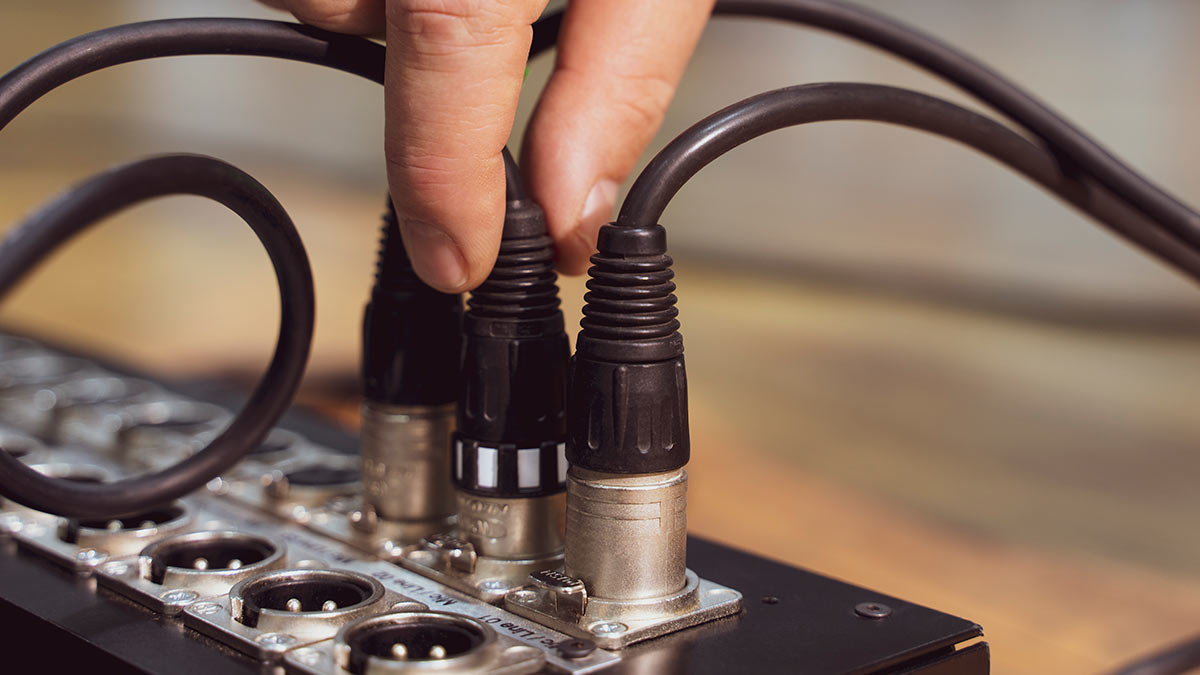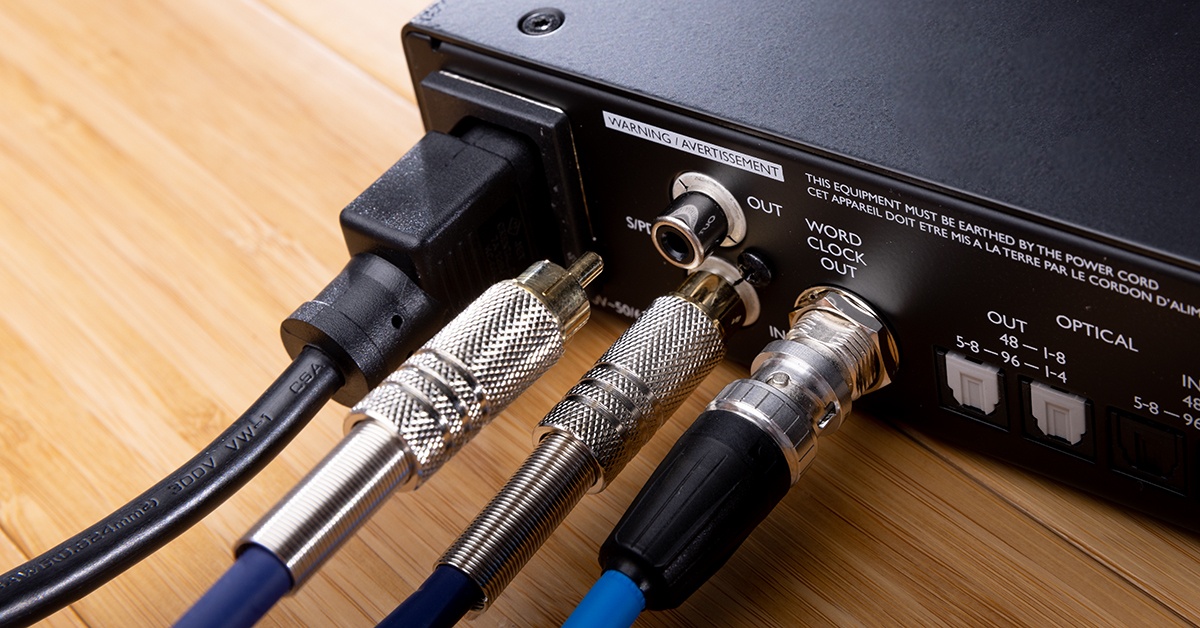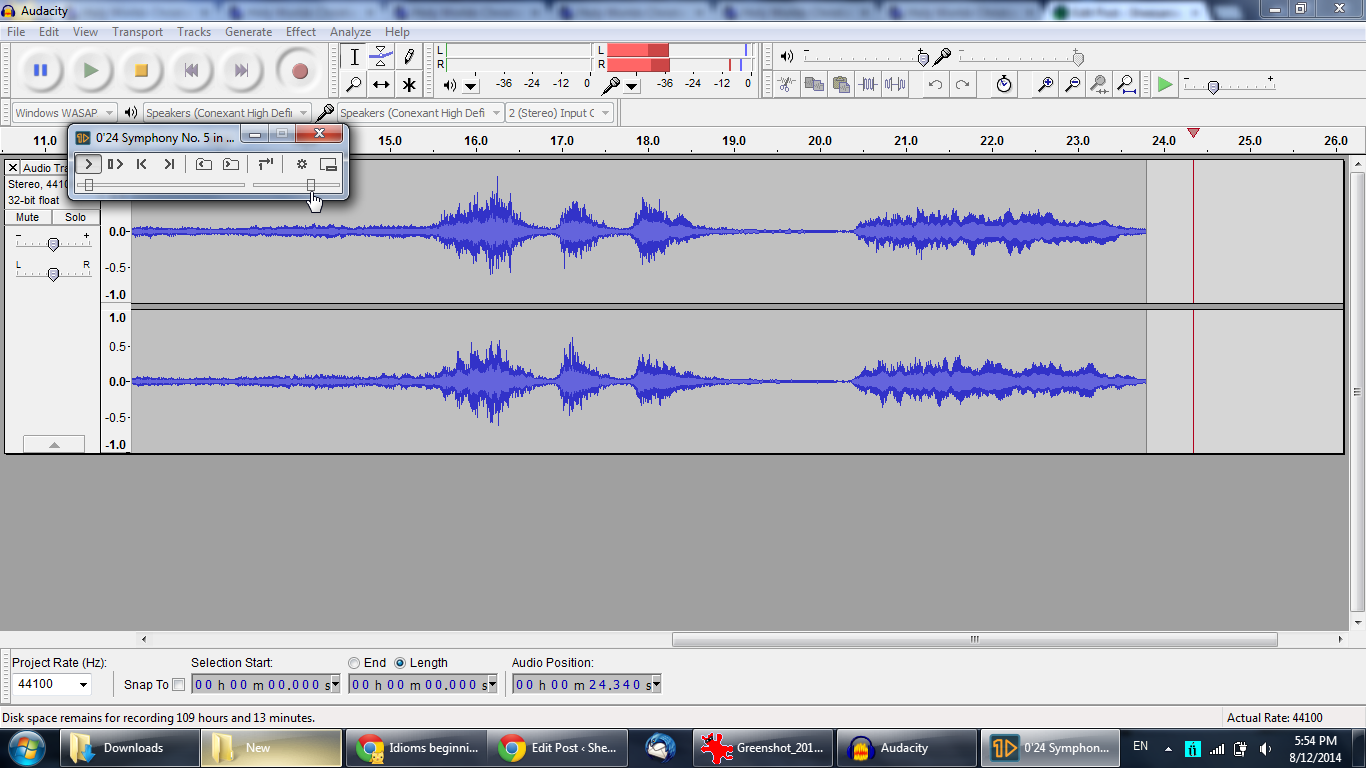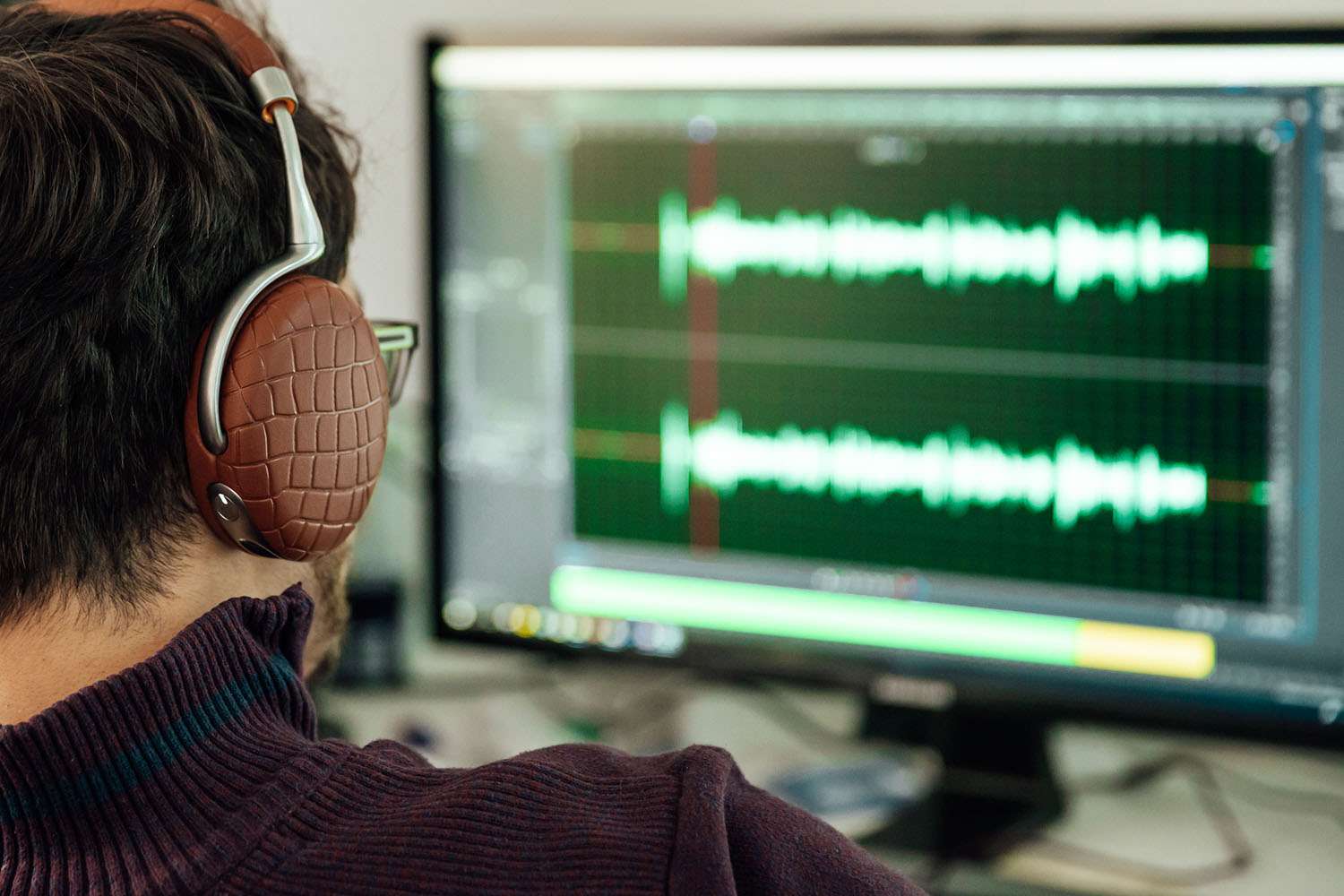Home>Production & Technology>Audio Cable>How Do I Uninstall Virtual Audio Cable?


Audio Cable
How Do I Uninstall Virtual Audio Cable?
Modified: January 22, 2024
Learn how to uninstall Virtual Audio Cable and remove the unwanted audio cable from your system. Follow our step-by-step guide to easily uninstall the software.
(Many of the links in this article redirect to a specific reviewed product. Your purchase of these products through affiliate links helps to generate commission for AudioLover.com, at no extra cost. Learn more)
Table of Contents
- Introduction
- Understanding Virtual Audio Cable
- Reasons for Uninstalling Virtual Audio Cable
- Step-by-Step Guide: Uninstalling Virtual Audio Cable
- Method 1: Uninstalling via Control Panel
- Method 2: Using the Uninstall.exe File
- Method 3: Removing Virtual Audio Cable using a Third-Party Uninstaller
- Troubleshooting Common Uninstallation Issues
- Conclusion
Introduction
Welcome to the world of audio cables, where every sound matters. Whether you’re a professional musician, an audio engineer, or just a passionate music lover, having the right audio cables can make a significant difference in the quality of sound reproduction. One such audio cable that has gained immense popularity in recent years is the Virtual Audio Cable.
Virtual Audio Cable is a software solution that allows you to transfer audio streams from one application to another. It acts as a virtual link between different audio devices and applications, enabling you to route audio signals seamlessly. This powerful tool has been widely used in the music production industry, streaming setups, and gaming communities.
However, there may come a time when you need to uninstall Virtual Audio Cable from your system. Whether it’s due to compatibility issues, performance concerns, or simply because you no longer need it, uninstalling the software can be a straightforward process if you know the right steps.
In this article, we will guide you on how to uninstall Virtual Audio Cable effectively. We will explore different methods that you can use to remove the software from your computer, ensuring a clean and complete uninstallation. So, if you’re ready to bid farewell to Virtual Audio Cable, let’s dive into the uninstallation process.
Understanding Virtual Audio Cable
Before we proceed with the uninstallation guide, it’s important to have a basic understanding of what Virtual Audio Cable is and how it functions. Virtual Audio Cable, sometimes abbreviated as VAC, is a software application that creates virtual audio devices on your computer. These virtual devices act as virtual cables that can be used to route audio between different applications or devices.
Imagine you have multiple audio sources, such as music players, virtual instruments, or audio editing software, and you want to route the audio output from one application to another. This is where Virtual Audio Cable comes into play. It creates virtual input and output devices, allowing you to send audio from one application to another as if you have physical audio cables connecting them.
The software works by intercepting the audio data that is sent from the source application and transferring it to the destination application. It does this by creating multiple virtual audio devices, much like physical cables, and handling the audio routing between them. This allows you to configure complex audio setups, stream audio to different devices simultaneously, or route audio between applications for recording or monitoring purposes.
Virtual Audio Cable offers various customization options and settings to tailor the audio routing according to your specific needs. It supports multiple channels, sample rates, and buffer sizes, providing flexibility in managing the audio flow. Additionally, the software is compatible with a wide range of audio applications and operating systems, making it a versatile tool in the audio industry.
With Virtual Audio Cable, you can achieve audio routing scenarios that might not be possible with physical audio cables alone. It opens up a world of possibilities for audio professionals and enthusiasts, enabling them to create complex audio setups, live stream performances, record podcasts, and much more.
Now that we have a better understanding of what Virtual Audio Cable is and how it functions, let’s explore the reasons why you might consider uninstalling the software in the next section.
Reasons for Uninstalling Virtual Audio Cable
While Virtual Audio Cable offers a wide range of capabilities and benefits, there may be various reasons why you might want to uninstall the software from your system. Let’s explore some common scenarios that could lead to the decision of uninstalling Virtual Audio Cable:
- Compatibility Issues: In some cases, Virtual Audio Cable may not be fully compatible with certain applications or hardware setups. This can result in audio distortion, latency issues, or even crashes. If you encounter frequent compatibility problems that affect your workflow or overall audio performance, you might consider uninstalling Virtual Audio Cable.
- Performance Concerns: Depending on your system’s specifications and the complexity of your audio setup, Virtual Audio Cable can have an impact on your computer’s performance. It requires system resources to handle the audio routing process, which may cause high CPU usage or memory consumption. If you notice a significant decrease in performance while using Virtual Audio Cable, removing the software might be a viable solution.
- Streamlining Setup: Over time, your audio needs and setups may change. You may find that Virtual Audio Cable is no longer necessary for your current setup and workflow. If you’ve simplified your audio routing or have found alternative solutions to achieve the same goals, uninstalling Virtual Audio Cable can help streamline your setup and remove any unnecessary software.
- Conflicting Software: Sometimes, conflicts can arise between Virtual Audio Cable and other audio-related software installed on your system. This can lead to instability or functionality issues in either Virtual Audio Cable or the conflicting software. If you’ve identified conflicts and have exhausted other troubleshooting steps, uninstalling Virtual Audio Cable may resolve the conflicts and restore functionality to the other software.
- Upgrade or Migration: If you’re upgrading your audio interface, changing your computer, or migrating to a different audio setup, you might need to uninstall Virtual Audio Cable. These changes may require different audio routing solutions or be incompatible with Virtual Audio Cable. It’s important to clean up any unnecessary software during these transitions to ensure a smooth and optimized audio environment.
These are just a few of the common reasons why you might choose to uninstall Virtual Audio Cable. Ultimately, the decision to remove the software should be based on your individual needs and the specific circumstances surrounding your audio setup. It’s essential to evaluate the impact of Virtual Audio Cable on your system’s performance, compatibility, and overall workflow to determine if uninstalling is the right course of action.
Now that we’ve explored the reasons for uninstalling Virtual Audio Cable, let’s move on to the step-by-step guide on how to uninstall the software from your computer.
Step-by-Step Guide: Uninstalling Virtual Audio Cable
Uninstalling Virtual Audio Cable from your computer is a straightforward process. In this step-by-step guide, we will walk you through the various methods you can use to uninstall the software.
Method 1: Uninstalling via Control Panel
- Open the Control Panel on your computer. You can do this by searching for “Control Panel” in the Start menu or by right-clicking the Start button and selecting Control Panel from the menu.
- In the Control Panel window, navigate to the “Programs” or “Programs and Features” section.
- Look for the entry labeled “Virtual Audio Cable” or “VAC” in the list of installed programs.
- Click on the Virtual Audio Cable entry to select it, then click on the “Uninstall” or “Remove” button.
- Follow the on-screen prompts to complete the uninstallation process. Depending on your system, you may be asked to confirm the removal or provide administrator privileges.
- Once the uninstallation is complete, restart your computer to ensure all traces of Virtual Audio Cable are removed from your system.
Method 2: Using the Uninstall.exe File
- Open File Explorer on your computer by pressing the Windows key + E.
- Navigate to the location where Virtual Audio Cable is installed. By default, it is typically found in the “Program Files” or “Program Files (x86)” directory.
- Locate the “uninstall.exe” or “unins000.exe” file in the Virtual Audio Cable directory.
- Double-click on the uninstall.exe file to run it.
- Follow the on-screen prompts to proceed with the uninstallation process.
- Once the uninstallation is complete, restart your computer to finalize the removal of Virtual Audio Cable.
Method 3: Removing Virtual Audio Cable using a Third-Party Uninstaller
If the above methods do not work or you prefer a more advanced uninstallation process, you can utilize third-party uninstaller software. These tools are designed to thoroughly scan your system for installed programs and ensure complete removal, including any leftover files or registry entries. Some popular third-party uninstallers include Revo Uninstaller, IObit Uninstaller, and GeekUninstaller. Simply download and install the desired uninstaller software, search for Virtual Audio Cable in the program list, and follow the provided instructions to uninstall it.
It’s important to note that depending on the version of Virtual Audio Cable you have installed and your specific system configurations, the file names and locations may vary. Always refer to the documentation provided with the software or consult the virtual audio cable manufacturer’s website for accurate uninstallation instructions.
Now that you have a clear understanding of the various methods to uninstall Virtual Audio Cable, you’ll be able to remove the software from your system easily. However, if you encounter any issues or face any challenges during the uninstallation process, refer to the troubleshooting section that we will cover next.
Method 1: Uninstalling via Control Panel
One of the most common and straightforward methods to uninstall Virtual Audio Cable is through the Control Panel on your computer. The Control Panel provides a centralized location where you can manage various aspects of your system, including installed programs.
Here’s a step-by-step guide on how to uninstall Virtual Audio Cable using the Control Panel:
- Open the Control Panel on your computer. You can do this by searching for “Control Panel” in the Start menu or by right-clicking the Start button and selecting Control Panel from the menu.
- In the Control Panel window, navigate to the “Programs” or “Programs and Features” section. The name may vary depending on your operating system version.
- Look for the Virtual Audio Cable entry in the list of installed programs. It may be listed as “Virtual Audio Cable” or “VAC.”
- Click on the Virtual Audio Cable entry to select it.
- Click on the “Uninstall” or “Remove” button, usually located at the top of the program list or in the toolbar. Alternatively, you may also find an “Uninstall” option by right-clicking on the Virtual Audio Cable entry.
- Follow the on-screen prompts to complete the uninstallation process. You may be asked to confirm the removal or provide administrator privileges.
- Once the uninstallation is complete, it is recommended to restart your computer to ensure all traces of Virtual Audio Cable are removed from your system.
By following these steps, you should be able to uninstall Virtual Audio Cable successfully using the Control Panel. However, note that the precise steps may slightly differ based on your operating system version. If you encounter any issues or find the Virtual Audio Cable entry missing from the installed programs list, refer to the troubleshooting section or consider using an alternative uninstallation method.
Method 2: Using the Uninstall.exe File
If you are unable to uninstall Virtual Audio Cable using the Control Panel or prefer a different method, you can remove it by utilizing the uninstall.exe file. This method involves locating and running the uninstallation executable file specific to Virtual Audio Cable.
Here are the steps to uninstall Virtual Audio Cable using the uninstall.exe file:
- Open File Explorer on your computer by pressing the Windows key + E.
- Navigate to the location where Virtual Audio Cable is installed. By default, it is typically found in the “Program Files” or “Program Files (x86)” directory.
- Locate the “uninstall.exe” or “unins000.exe” file in the Virtual Audio Cable folder.
- Double-click on the uninstall.exe or unins000.exe file to run it. This will initiate the uninstallation process of Virtual Audio Cable.
- Follow the on-screen prompts provided by the uninstaller to complete the removal. You may be asked to confirm the uninstallation or provide administrator privileges.
- Once the uninstallation process is finished, it is recommended to restart your computer to ensure all remnants of Virtual Audio Cable are eliminated from your system.
Using the uninstall.exe file offers a direct approach to remove Virtual Audio Cable from your computer. It bypasses the need to access the Control Panel and provides a simple and efficient way to uninstall the software.
However, please note that the filename and location of the uninstall.exe file may vary depending on the Virtual Audio Cable version and the installation settings on your system. If you encounter difficulties finding the uninstaller executable, refer to the software’s documentation or website for specific instructions.
Now that you have learned the steps to uninstall Virtual Audio Cable using the uninstall.exe file, let’s explore another method that involves utilizing third-party uninstaller software.
Method 3: Removing Virtual Audio Cable using a Third-Party Uninstaller
If the previous methods didn’t work or if you prefer a more advanced and thorough uninstallation process, you can consider using a third-party uninstaller software. Third-party uninstallers are specifically designed to remove programs completely from your system, including any leftover files and registry entries that may be missed by traditional uninstallation methods.
Here’s how you can remove Virtual Audio Cable using a third-party uninstaller:
- Search for reputable third-party uninstaller software that suits your needs. Popular options include Revo Uninstaller, IObit Uninstaller, and GeekUninstaller.
- Download and install the chosen uninstaller software onto your computer.
- Launch the installed uninstaller software.
- Within the uninstaller program, locate the option to scan for installed programs. This feature will ensure that all the installed software on your system is listed.
- Look for Virtual Audio Cable in the list of installed programs generated by the uninstaller. It should be highlighted or labeled as “Virtual Audio Cable” or “VAC”.
- Select Virtual Audio Cable from the list.
- Follow the instructions provided by the uninstaller software to proceed with the uninstallation process. This typically involves clicking on an “Uninstall” or “Remove” button.
- Once the uninstallation is complete, the third-party uninstaller software may prompt you to restart your computer. It’s recommended to do so, ensuring all traces of Virtual Audio Cable are eradicated.
Third-party uninstaller software can be a valuable tool when dealing with stubborn or resistant programs like Virtual Audio Cable. These tools offer in-depth scanning and removal capabilities, ensuring a complete uninstallation without leaving behind any residual files or registry entries.
Remember to download such software from trusted sources to ensure the protection and integrity of your system. Additionally, familiarize yourself with the features and functionality of the chosen uninstaller software, as their interfaces and processes may differ slightly.
Now that you have learned how to remove Virtual Audio Cable using a third-party uninstaller, you are equipped with various methods to uninstall the software. However, if you encounter any issues or complications during the uninstallation process, refer to the troubleshooting section for assistance.
Troubleshooting Common Uninstallation Issues
While uninstalling Virtual Audio Cable is usually a straightforward process, you may encounter some issues that can hinder the removal. Here are some common uninstallation issues and troubleshooting steps to help you overcome them:
- Program not found in Control Panel: If you cannot find Virtual Audio Cable in the Control Panel’s list of installed programs, it may indicate an improper installation or a different method of installation. In this case, refer to the Virtual Audio Cable documentation or website for specific uninstallation instructions.
- Error messages during uninstallation: If you receive error messages during the uninstallation process, take note of the exact error message and search for solutions online. The error message may provide clues to underlying issues such as missing files or conflicting programs.
- Unable to remove all program files: Sometimes, certain files or folders associated with Virtual Audio Cable may remain on your system even after the uninstallation process. Manually deleting these files can be risky, as they may be necessary for other software applications. In such cases, consult the software’s documentation or seek guidance from the software manufacturer’s support team.
- Registries not properly cleaned: Uninstalling Virtual Audio Cable via traditional methods may leave behind registry entries. To clean up the registries, consider using registry cleaning software. However, exercise caution when using registry cleaners, as incorrect use can potentially harm your system.
- Conflicts with other applications: If Virtual Audio Cable conflicts with other audio-related software on your system, it may cause a disruption during the uninstallation process. To resolve conflicts, try closing any running applications or background processes that may interfere with the uninstallation process. Additionally, ensure that you have administrative permissions to uninstall Virtual Audio Cable effectively.
If you encounter any difficulties or unique issues during the uninstallation process, it’s advisable to reach out to the Virtual Audio Cable support team for guidance. They will be able to provide specific instructions based on your situation and assist you in troubleshooting any uninstallation-related problems.
Now that we have covered troubleshooting common uninstallation issues, you are well-equipped to handle any challenges that may arise during the removal of Virtual Audio Cable. Let’s conclude this article in the next section.
Conclusion
Uninstalling Virtual Audio Cable may become necessary for various reasons, such as compatibility issues, performance concerns, or changes in your audio setup. In this comprehensive guide, we have explored multiple methods to uninstall Virtual Audio Cable effectively.
We started by understanding what Virtual Audio Cable is and how it functions as a virtual audio routing solution. We then discussed common reasons for uninstallation, including compatibility issues, performance concerns, and the need to streamline audio setups.
Next, we provided step-by-step instructions for three methods of uninstalling Virtual Audio Cable. The first method involved using the Control Panel to remove the software, while the second method utilized the uninstall.exe file. Finally, we discussed the option of using third-party uninstaller software for a thorough removal of Virtual Audio Cable from your system.
In the troubleshooting section, we addressed common issues that may arise during the uninstallation process and provided guidance on how to overcome them. From program not being found in the Control Panel to registry cleaning and conflicts with other applications, we offered suggestions to help resolve these challenges.
Remember to always refer to the software’s documentation or support resources for specific instructions and consult with the Virtual Audio Cable manufacturer if you encounter any difficulties during the uninstallation process.
By following the steps outlined in this guide and troubleshooting any issues that may arise, you should be able to successfully uninstall Virtual Audio Cable from your system.
Whether you decide to remove Virtual Audio Cable to address compatibility concerns, streamline your audio setup, or explore alternative solutions, uninstalling the software allows you to have greater control over your audio environment.
Now that you have the knowledge and tools to uninstall Virtual Audio Cable, you can move forward and make the necessary changes to optimize your audio experience. Embrace the freedom to explore new options, upgrade your audio setup, or try out alternative software solutions to meet your evolving audio needs.











